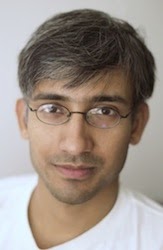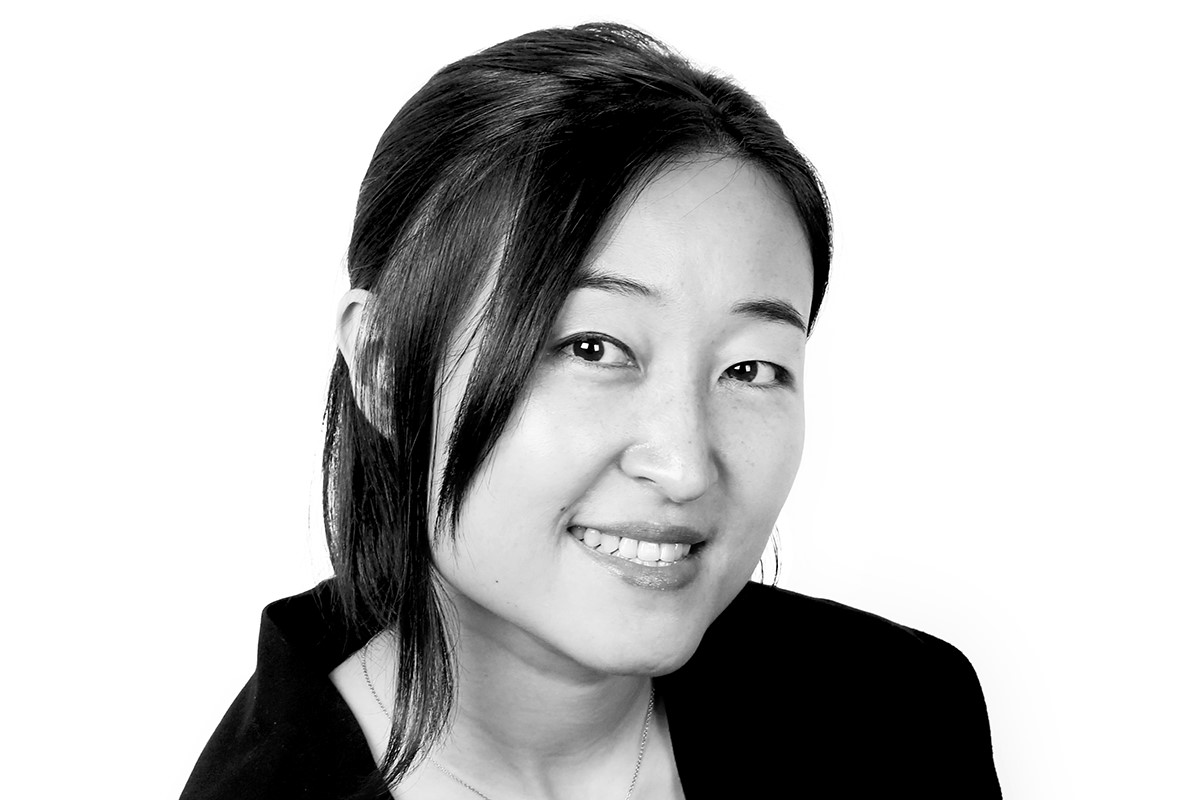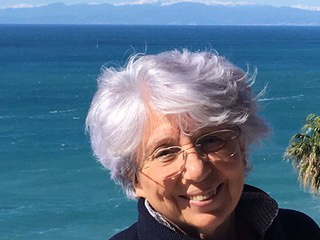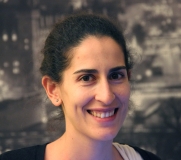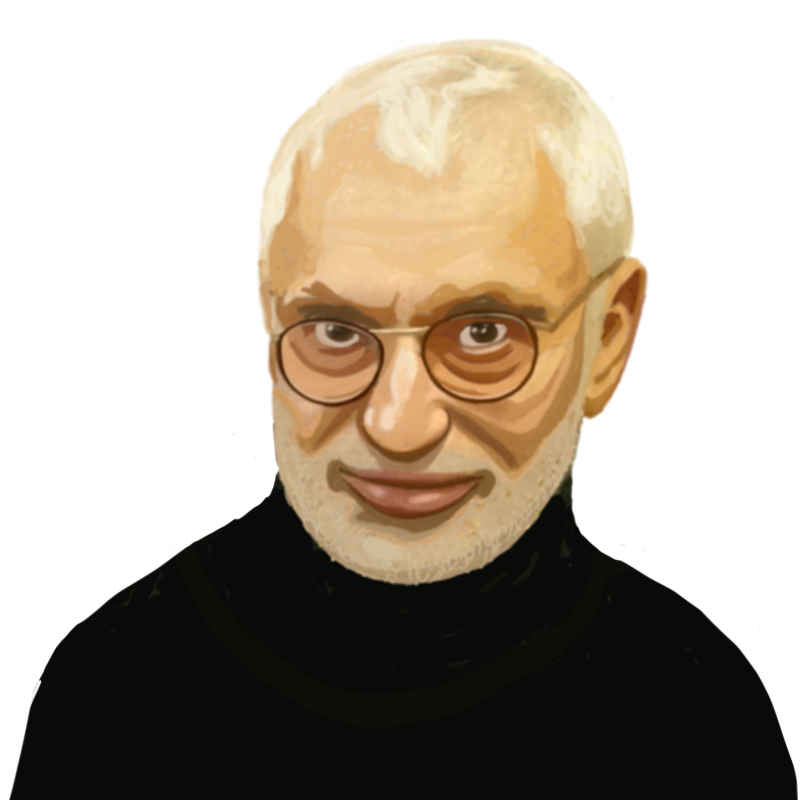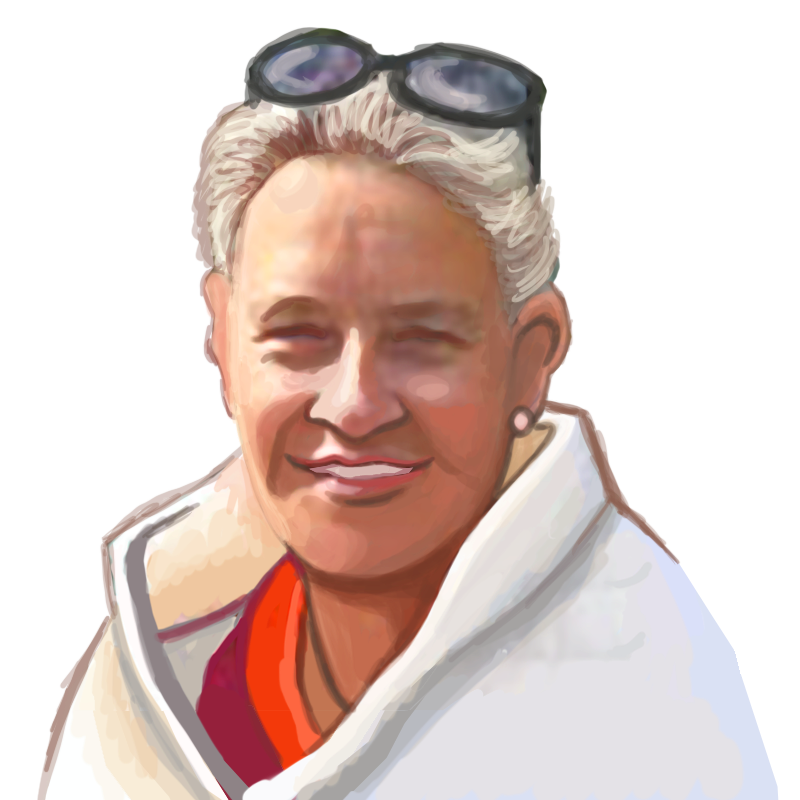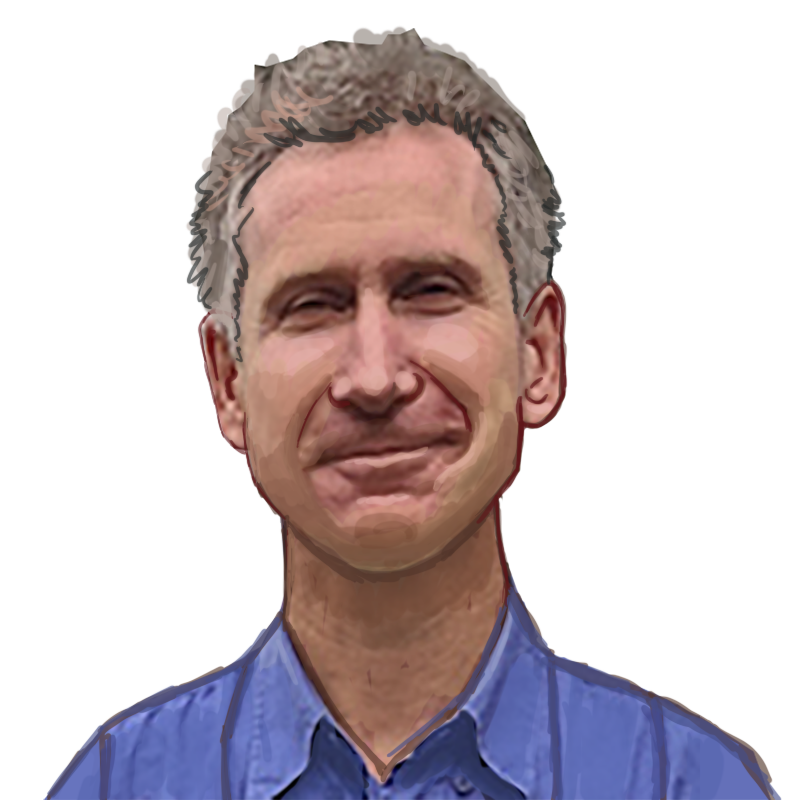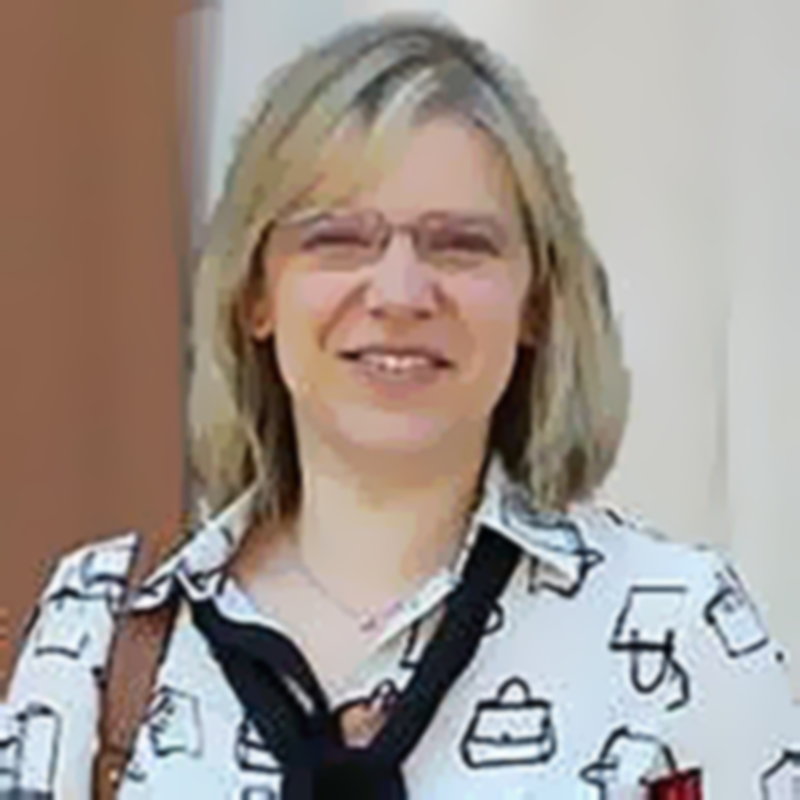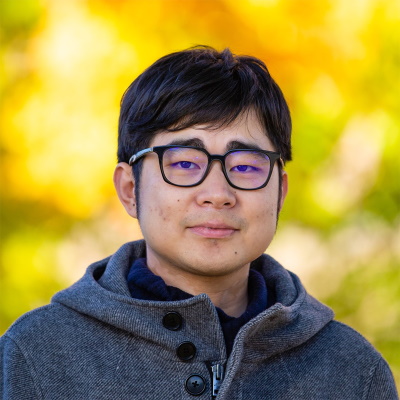|
SUNDAY, NOV. 14TH, SUBDIVISION HISTORY DAY
|
10:30-11:00 (New York)
16:30-17:00 (Rome)
23:30-24:00 (Beijing)
|
Opening |
11:00-11:50 (New York)
17:00-17:50 (Rome)
24:00-00:50 (Beijing - Next Day)
|
Panel: Early days of Subdivision
Chair: Ergun Akleman
Panelists:
Ed Catmull, Elaine Cohen, Tony DeRose, Jeff Lane, Richard
Riesenfeld, Malcolm Sabin
|
12:00-12:50 (New York)
18:00-18:50 (Rome)
01:00-01:50 (Beijing - Next day)
|
Panel: Subdivision Becomes Mainstream in Graphics
Chair: Malcolm Sabin
Panelists:
Ed Catmull, Nira Dyn, Tony DeRose, David Levin, Charles
Loop, Jan Pinkava, Jörg Peters, Ulrich Reif, Jos Stam
|
13:00-13:50 (New York)
19:00-19:50 (Rome)
02:00-02:50 (Beijing - Next day)
|
Panel: Beyond
Chair: Jörg Peters
Panelists:
Ergun Akleman, Leif Kobbelt, Ahmad Nasri, Peter Schröder,
Luiz Velho, Joe Warren, Denis Zorin
|
|
MONDAY, NOV. 15TH
|
08:00-08:45 (New York)
14:00-14:45 (Rome)
21:00-21:45 (Beijing)
|
Keynote:
Data-Driven 3D Modeling
Speaker: Siddhartha Chaudhuri
Chair: Yang Liu
|
08:45-09:45 (New York)
14:45-15:45 (Rome)
21:45-22:45 (Beijing)
|
Session I: Modeling & Reconstruction
Chair: Gershon Elber
Real-time Skeletonization for Sketch-based Modeling
[link]
[code]

Jing Ma, Jin Wang, Jituo Li, Dongliang
Zhang
Accurate Floorplan Reconstruction Using Geometric Priors
[link]
Ruifan Cai, Honglin Li, Jun Xie, Xiaogang
Jin
Enhanced Narrow Band Surface Reconstruction with Anisotropic
Kernel
[link]
Qiaorui Chen, Shuai Zhang, Yao Zheng
|
09:45-10:00 (New York)
15:45-16:00 (Rome)
22:45-23:00 (Beijing)
|
Virtual Roundtable Discussion
A few zoom breakout rooms will be created for online
discussion. Please participate and share your opinions. The
suggested discussion topics are listed
here.
|
10:00-10:45 (New York)
16:00-16:45 (Rome)
23:00-23:45 (Beijing)
|
Award Talk:
On the Computational Design of Deformable Objects
Speaker: Mélina Skouras
Chair: Bo Zhu
|
10:45-11:45 (New York)
16:45-17:45 (Rome)
23:45-00:45 (Beijing - Next day)
|
Session II: Learning-based Reconstruction
Chair: Ramanathan Muthuganapathy
Learning Modified Indicator Functions for Surface
Reconstruction
[link]
Dong Xiao, Siyou Lin, Zuoqiang Shi, Bin
Wang
Learning Persistent Homology of 3D Point Clouds
[link]
Chi Zhou, Zhetong Dong, Hongwei Lin
Unsupervised Recursive Deep Fitting 3D Primitives to Points
[link]
Tsahi Saporta, Andrei Sharf
|
11:45-12:00 (New York)
17:45-18:00 (Rome)
00:45-01:00 (Beijing - Next day)
|
Virtual Roundtable Discussion
A few zoom breakout rooms will be created for online
discussion. Please participate and share your opinions. The
suggested discussion topics are listed
here.
|
12:00-12:15 (New York)
18:00-18:15 (Rome)
01:00-01:15 (Beijing - Next day)
|
Virtual Award Ceremony
Chair: Brian Wyvill
|
12:15-13:15 (New York)
18:15-19:15 (Rome)
01:15-02:15 (Beijing - Next day)
|
Session III: Registration & Animation
Chair: Jos Stam
Hierarchical Mesh-to-points As-rigid-as-possible Registration
[link]
Pierre Bourquat, Guillaume Damiand, David
Coeurjolly, Florent Dupont
As-rigid-as-possible Volume tracking for Time-varying Surfaces
[link]
Jan Dvořák, Zuzana Káčereková, Petr
Vaněček, Lukáš Hruda, Libor Vasa
Automatic Shape Adjustment at Joints for the Implicit Skinning
[link]
Olivier Hachette, Florian Canezin, Rodolphe
Vaillant, Nicolas Mellado, Loïc Barthe
|
13:15-13:30 (New York)
19:15-19:30 (Rome)
02:15-02:30 (Beijing - Next day)
|
Virtual Roundtable Discussion
A few zoom breakout rooms will be created for online
discussion. Please participate and share your opinions. The
suggested discussion topics are listed
here.
|
|
TUESDAY, NOV. 16TH
|
08:00-08:30 (New York)
14:00-14:30 (Rome)
21:00-21:30 (Beijing)
|
Award Talk:
Shape Modeling: from Geometry to Semantics
Speaker: Bianca Falcidieno
Chair: Jorg Peters
|
08:30-09:30 (New York)
14:30-15:30 (Rome)
21:30-22:30 (Beijing)
|
Session IV: Synthesis and Surfaces
Chair: Myung-Soo Kim
Synthesis of 3D Jigsaw Puzzles over Freeform 2-Manifolds
[link]
Gershon Elber, Myung-Soo Kim
A Multigrid Approach for Harmonic Measured Foliations
[link]
Shaodong Wang, Shuai Ma, Hui Zhao,
Wencheng Wang
Projection-based Classification of Surfaces for 3D Human Mesh
Sequence Retrieval
[link]
Emery Pierson, Juan-Carlos Alvarez-Paiva,
Mohamed Daoudi
|
09:30-09:45 (New York)
15:30-15:45 (Rome)
22:30-22:45 (Beijing)
|
Virtual Roundtable Discussion
A few zoom breakout rooms will be created for online
discussion. Please participate and share your opinions. The
suggested discussion topics are listed
here.
|
09:45-10:30 (New York)
15:45-16:30 (Rome)
22:45-23:30 (Beijing)
|
Keynote:
Computational Geometry for Morphing Matter Design
Speaker: Lining Yao
Chair: Silvia Biasotti
|
10:30-11:10 (New York)
16:30-17:10 (Rome)
23:30-00:10 (Beijing - Next day)
|
Session V: Reconstruction & Representation
Chair: Georges-Pierre Bonneau
Extracting Datums to Reconstruct CSG Models from 2D
Engineering Sketches of Polyhedral Shapes
[link]
Raquel Plumed, Peter Ashley, Clifford
Varley, Pedro Company, Ralph Martin
An Improved Refinement Rule for Multi-sided Faces
[link]
Kestutis Karciauskas, Jörg Peters
|
11:10-13:10 (New York)
17:10-19:10 (Rome)
00:10-02:10 (Beijing - Next day)
|
FASE Paper Session [Proceeding]
Chair: Oleg Fryazinov
Shell-Lattice Construction based on Regular and Semi-regular
Tiling via Functional Composition [pdf]
Sumita Dahiya, Avi Shein, Gershon Elber
Dithering by Wires of Orthogonal Images [pdf]
Firas Habib, Sagit Asman, Gershon Elber
Positive Genus Space-Filling Tiles (short paper) [pdf]
Ergun Akleman, Vinayak Krishnamurthy, Chia-An Fu, Courtney
Starrett, Sai Ganesh Subramanian, Doyeon Kim, Nicholas
Cropper, Mathew Ebert
Construction of Planar and Symmetric Truss Structures with
Interlocking Edge Elements (short paper) [pdf]
Anantha Natarajan, Jiaqi Cui, Ergun Akleman, Vinayak
Krishnamurthy
3D Gosper Sculptures [pdf]
Carlo H. Séquin
|
13:10-13:25 (New York)
19:10-19:25 (Rome)
02:10-02:25 (Beijing)
|
Virtual Roundtable Discussion
A few zoom breakout rooms will be created for online
discussion. Please participate and share your opinions. The
suggested discussion topics are listed
here.
|
13:25-13:55 (New York)
19:25-19:55 (Rome)
02:25-02:55 (Beijing - Next day)
|
Best paper awards & Ending
Chair:: Ergun Akleman
|






